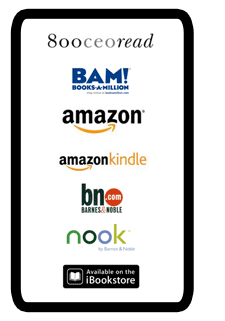Introducing HelpMeSellMe – A new opportunity from David Topus
January 11th, 2013 by user
As a career-minded professional, you have achieved a notable level of success through your intelligence, skills, hard work, and knowing how to take advantage of opportunity. Perhaps you’ve built a high performing team. Helped your company increase its revenues. Decrease its costs. Improve performance and productivity.
But like most upwardly-mobile professionals, you’re always looking to an even better future. In today’s competitive job market, successful careers don’t just happen, they’re managed. And the key is in being transition-ready. That means having the next opportunity in sight. Having a resume and personal marketing materials that are up-to-date and engaging. And that differentiate you from the competition.
You know what you’re capable of. Others around you know, too. But will your personal marketing materials convey your value proposition and expertise so you can make a smooth, rapid and profitable transition?
With HelpMeSellMe, you get packaged, positioned and presented to ensure your unique value proposition is recognized. And to help you get found and hired. Think of it as detailing for your career. Whether you’re in transition, or want to build a personal brand that keeps you in demand, HelpMeSellMe is where you get shined, polished and buffed. With dynamic resumes that position you. Innovative Biografics that differentiate you. And online profiles that make you easy to find. With HelpMeSellMe, you get the attention you need, the job you want, and the compensation you deserve.
HelpMeSellMe. It’s How You Roll.
The team is led by David Topus, one of the nation’s leading personal branding and career experts. David was the founder of ExecuNet’s Career Services division, and inventor of the game-changing Biographic. Working closely with David is a group of highly trained, certified and experienced personal marketing professionals, including resume writers, job search strategists, career coaches and social media experts.
David Topus

David turns reputations into revenue by taking the mess out of messaging and putting the art in articulation. A veteran expert in value-based communication, he brings a thirty year career of turning reputations into revenue for companies and individuals across the country andaround the world. In addition to running his own sales messaging and readiness firm since 1990, he was the founding general manager of ExecuNet’s Career Services Division, where he built a team of personal marketing content specialists and job search consultants. His early background includes 12 years in advertising and marketing with The Wall Street Journal, Washington Post and IDG Communications. He is the author of “Talk to Strangers: How Your Everyday, Random Encounters Can Expand Your Business, Career, Income and Life” (John Wiley, April 2012). He has an uncanny ability to uncover and convey in engaging and compelling terms an individual’s unique value proposition.
PRESIDENT OBAMA COULD HAVE USED A GOOD SALES TRAINER.
November 5th, 2012 by user
While the outcome of the election is far from certain, and the president may in fact win re-election, if he had employed some basic sales principles over the last five ultra-competitive months, he might have a bigger lead as he races to the finish line. Here are five tenets of sales messaging that any good salesperson knows – and that could have made a difference in this election.
Control the conversation – customers (voters) are bombarded with messages. When you add too much to the pitch, or vary the message, you make it hard for the decision maker to follow. Yes the issues are many – taxes, jobs, education, infrastructure, foreign affairs — but in the debates, and in his campaigning, the conversation within each of these categories varied widely, and was hard to follow. He allowed himself to be redirected from topic to topic. You would never let that happen with a prospective customer; you would want to keep the conversation focused.
Keep the pitch simple – Obama has four or five notable successes to his credit – Bin Laden, keeping the auto industry alive, preventing terrorist attacks here at home, withdrawing troops from Iraq. He should have focused on them, and just them, and stuck with them. The best value propositions are simple and repeated so the customer really gets it.
Use customer testimonials – It’s one thing if you (the salesperson) say your product/service/company is fantastic, but even better if your other customers say it. Surely there are lots of people who appreciate and have benefitted from what Obama has done. Take Obamacare. Most of the banter is that it’s a horrible thing for America. But surely there are Americans who’ve benefitted from it. Why not put them front and center and let them speak on its behalf?
Never dis your competition – This is professional selling 101. I learned it first day on the job. Sure, you believe your product or service is better than your competitors’, and you know what’s wrong with your competitors’ products and services. But it’s not your place to tell the customer what that is. It’s up to the customer to find it out for themself. By my calculation, half of the debate conversation and subsequent campaigning was about what’s wrong with the competitor. That’s unprofessional, and it tends to backfire, reflecting poorly on you in the prospect’s mind.
Introduce change as a risk – Change is scary, so you always have a built-in advantage when you’re the incumbent vendor to your customer. You know the customer’s issues and key people and the process is in place to service and support the customer. The notion of a new vendor creates all kinds of questions and uncertainty, and it’s certainly the case when you swap out the entire Federal government from one party to another. Most people understand this concept, yet I haven’t heard the Obama campaign or Democrats bring up this point.
To be sure, politics and sales are not the same, but there are corollaries, especially when it comes to campaigning. It’s pretty much a sales process, with many of the same elements. The president may pull it off anyway, but had he and his campaign applied some basic sales techniques, he might be breathing a little easier today.
-By David Topus
What you say matters!
September 20th, 2012 by user
You might have seen the video of the blind man sitting in front of the downtown office building with a tin can and a sign “I am blind. Please help”. A few occasional contributors stop and add some change to his can. Then a woman comes by and rewrites the sign, and suddenly the number of givers increases so that almost everyone is putting in money. After watching this sudden shift in contributions we see that the new sign reads, “It’s a beautiful day and I can’t see it”.
WOW, what a difference words make. And what a great reminder that if we tap into others’ experiences, and communicate in ways others can relate to emotionally, our message will be so more compelling. In this case, it wasn’t just that he was blind, it was that the new sign, “It’s a beautiful day and I can’t see it” resonated with sighted people who could experience the beauty. It was more content-rich. It made the message personal. It reminded others how fortunate they were compared to him. And it stirred their basic human compassion.
How we convey ideas, thoughts, experiences and feelings makes all the difference in the response we get. True in all forms of communication — whether you’re sharing a story with a friend, writing a resume, sending a sales letter, making a presentation, or striking up a conversation with a random stranger. If you want your audience to engage, to think a certain way, to do something…put yourself in their shoes and consider what’s going to get below the surface and reach them emotionally…that will reach their hearts and souls.
I love when people wear their company logos.
May 7th, 2012 by admin
It makes random connecting so much easier.
v They’re kind of like bumper stickers on cars — they give you information about the owner. And they make it so natural to start a conversation. “You work for those guys?”, is a perfect question for starting a conversation. Most people will light up when you ask, and most of the time will respond affirmative. I say most of the time because it’s possible they’re wearing someone else’s logo, or garment for that matter, but that’s unlikely. It’s also possible they hate their company, but that’s also unlikely, especially if they’re wearing the logo.  So back to the conversation…”How long’ve you been with them?”, is a great follow up. And from there, “what do you do for them?”, asked with authentic curiosity will help you guide the conversation to discover what is possible. If you know someone who works at the same company, you might ask if they know them. If you know something about the industry, you might remark on it. If you want to know more about the industry, you can ask.
So back to the conversation…”How long’ve you been with them?”, is a great follow up. And from there, “what do you do for them?”, asked with authentic curiosity will help you guide the conversation to discover what is possible. If you know someone who works at the same company, you might ask if they know them. If you know something about the industry, you might remark on it. If you want to know more about the industry, you can ask.
… When someone wears a piece of clothing with their company logo on it, they’re usually proud of it. And they’re usually willing to talk about it. After all, it’s there for all to see. What a great invitation to connect, to converse, to explore and to learn. From there, anything is possible.

CBS Money Watch picks up Talk To Strangers
May 1st, 2012 by DTopus
Network Without Trying
By
Amy Levin-Epstein
(MoneyWatch) Standing in the checkout line at the grocery store. Waiting to pay for your dry cleaning. Sitting at your child’s bus stop pick-up spot. All of these seem like boring stops in your everyday life, right? Not so, according to a new book, “Talk to Strangers: How Everyday, Random Encounters Can Expand Your Business, Career, Income, and Life.” Author David Topus says these are all potential networking opportunities — every bit as useful as a formal meet-and-greet events.
Here’s what he has to say about turning chance encounters into opportunities to gain information, contacts, or even a new job.
Why is casual networking — done as you go about your day — even more effective than the traditional kind?
Topus: You see the same people again and again at formalized networking activities, where in a random everyday situation you’ll meet fresh people. Networking events also tend to attract people who are looking for things, not necessarily the people who have things to give out (like jobs and investments). Finally, people who have influence may tend to stay away from those kinds of events. When you meet someone in a random situation who is influential they are often less guarded.
What are some possible networking venues?
Topus: You could meet someone in an elevator, standing in line in the supermarket checkout, at Starbucks, and certainly sitting on an airplane. You can even meet someone standing on the sidelines watching your kids play soccer. You never know who is influential — you have to assume that everyone is worth meeting, and that you can improve everyone’s life somehow. Approach everyone equally.
Why are planes such a great place to network?
Topus: When you’re on a plane you have uninterrupted time. If you’re sitting next to the person you clearly have lots of uninterrupted time with them. The environment is naturally conducive to random connecting. If you’re sitting in first class, you [often] find people of influence.
How might someone initiate these random encounters?
Topus: Say something that is engaging and reasonably intelligent, and maybe somewhat revealing. If you’re in a travel venue and someone has a big suitcase, you might say, “That looks like a long trip, where are you headed?” If you’re in a coffee shop and somebody is working on their laptop, ask about the technology. “How do you like your MacBook Pro? What kinds of stuff do you do with it? What kind of work do you do?”
Do you practice this casual type of networking in your everyday life? Please share in the comments section.
Opening the Door to Conversation
May 1st, 2012 by DTopus

I recently made a great connection with someone standing next to me at the bookstore next to a huge display of advice books for college graduates. All I did was remark on how much advice there was on the topic, and how kids today need all the help they can get. He agreed, and then I made the conversation a little more personal by asking if he needed that much advice when HE graduated (he was my age so I knew I was taking him back a ways). Not really he said, because he had an in-demand major and got a job right away. He proceeded to tell me about his first job, and how things were easier then. From we talked about his career path and current line of work, for which my book happened to be highly relevant. He bought a copy, we exchanged cards, and I now have a new contact who happens to run a small engineering company. It all began with a comment about what was happening in the moment.


